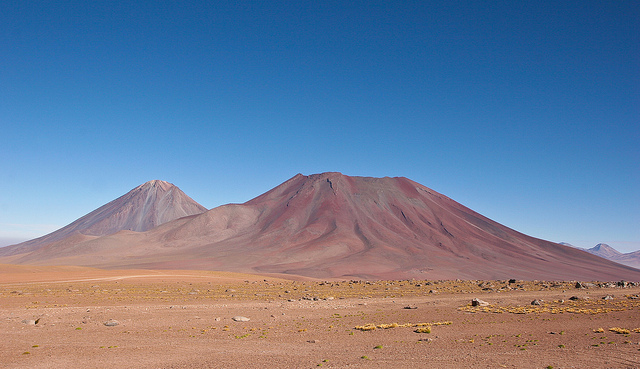 Though seemingly lifeless, the fantastic lunar landscapes of the Atacama Desert are actually teeming with life and stories.
Though seemingly lifeless, the fantastic lunar landscapes of the Atacama Desert are actually teeming with life and stories.
If you visit the Atacama, you might find yourself thinking that it looks a lot like Mars. Well, you’d be right. Not only has the Atacama stood in for Mars on movie sets, it has also been used by scientists to test equipment destined for use on Mars.
Earlier this year, scientists tested a machine called SOLID (Signs of Life Detector) in the Atacama. The Atacama was chosen as a test site due to the many similarities between it and Mars. Like Mars, the Atacama is extremely dry, with zero rainfall (in places) and dusty soil. Using SOLID, the scientists were able to detect and analyze microbial lifeforms living six to nine feet under the desert’s surface. This has given them hope that they may detect similar lifeforms on Mars.
The Atacama was not always so empty. In the nineteenth century, many people built settlements and mines in order to extract nitrate from the Atacama. The nitrate was then sent to the coastal cities and shipped all over the world for use as fertilizer. This business was so profitable that it led to the War of the Pacific, in which Chile seized control of the region’s rich mineral resources and Bolivia lost its coastal territories and became a landlocked nation.
With the invention of synthetic nitrate, the nitrate mining industry became unprofitable and quickly dried up. Today abandoned mines and ghost towns are all that remain of the Atacama’s industrial past. Due to the lack of moisture in the desert air, these historic structures are extremely well preserved and will endure for many years to come.
Surviving the harsh conditions of the Atacama requires hard work and ingenuity. For years, desert towns imported a lot of water and other supplies. Recently, a team of scientists helped the residents of Chungungo, Chile change that. While rain is unheard of in the Atacama, fog is quite common on the coastal side of the desert. Chungungo now has a system of fine mesh nets and troughs that catch and harvest the moisture from fog, creating about 2,600 gallons of water per day! Now the people of Chungungo can shower daily and water their gardens, without having to buy water off a truck.